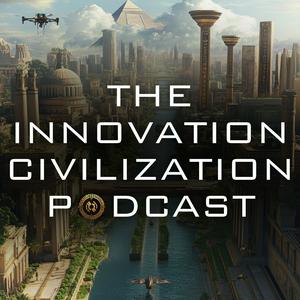#36 - George Sivulka : Knowledge Work 2.0: The Company Creating The Multi-Agent Future
We’re joined by George Sivulka, Founder and CEO of Hebbia, for a conversation on how does the future of white collar work look like with multi-agents. Hebbia is backed by some of the most legendary technology investors of our generation including Peter Thiel (early investor: Paypal, Facebook), Marc Andreesen (early investor: Airbnb, Github, Coinbase), Eric Schmidt (ex-CEO Google), Jerry Yang (Co-founder Yahoo).
George’s background from Stanford’s PhD program, combined with his work at the cutting edge of AI meta-learning, has led him to a bold mission: to build Hebbia into a generationally important company that captures the full power of the AI revolution, not through chatbots, but through entirely new interfaces for serious, complex work.
We dive into:
What does the future of white collar/knowledge work look like
What the future UX/UI of Agentic AI might be (beyond chatbots).
How Hebbia uses multi-agent orchestration to tackle tasks like investment research, drug discovery, and complex analysis.
How Hebbia solves hallucination by "citing first, generating second."
Why George believes AI won't eliminate jobs, but will transform how we work—and why humans will always find new ways to create value.
The lessons George has learned from investors like Peter Thiel and Eric Schmidt about building great companies.
We also discuss deeper trends like the geography of AI data centers, the future of inference scaling laws, and why the real competitive advantage won't be technology alone — but taste, orchestration, and human-AI collaboration.
Key Takeaways from the Episode:
1. Chatbots Are Just the Beginning:
George explains why chat is a weak UI for serious work—the future will be spreadsheet-like, matrixed, and human/agent collaborative.
2. Multi-Agent Orchestration is Key:
Hebbia focuses on orchestrating many AI agents and humans together to handle truly complex, multi-hop tasks across domains.
3. Hallucination-Free AI:
Hebbia flips the model—retrieving and citing information first, then generating outputs—to ensure accuracy and trust in critical workstreams.
4. AI Will Augment, Not Replace Humans:
Work will shift from purely human to hybrid models, with humans and AI agents collaborating fluidly rather than one replacing the other.
5. Taste and Human Judgment Will Matter More Than Ever:
As software creation becomes ubiquitous, taste, creativity, and judgment will be the new moats for great companies.
6. The Importance of Geopolitics in AI Infrastructure:
George highlights why where data centers are located — and who controls compute — will be a defining factor for global AI leadership.
7. Building for the Entire Planet, Not Just One Nation:
George’s vision for Hebbia is a global platform for all humanity, regardless of geopolitical shifts.
Timestamps:
(00:00) - Intro
(01:48) - Why is Hebbia a generationally important company shaping the future of civilization?
(04:23) - Is the chatbot interface the wrong path for the future of AI user experiences?
(06:45) - What core problem is Hebbia solving that current LLMs and AI tools haven’t addressed yet?
(09:34) - How does Hebbia tackle AI hallucinations?
(13:10) - What will a multi-agent AI future look like for everyday users in the next decade?
(15:00) - Will AI replace white-collar jobs first—and what does the future of knowledge work really look like?
(19:20) - Is the AI revolution truly different because it introduces general intelligence beyond past technologies?
(23:09) - Is the decentralization of knowledge creating a new wave of better scientists outside traditional institutions?
(24:11) - Is the rise of no-code and ubiquitous software creation signaling the end of traditional B2B SaaS?
(26:54) - How do legendary investors like Eric Schmidt, Peter Thiel, and Jerry Yang influence Hebbia’s strategy and vision?
(28:54) - What makes Hebbia stand out as multi-agent AI technology rapidly advances?
(30:32) - What AI trend are people not paying enough attention to?
(32:31) - How are global shifts in trade and politics shaping the future of AI and company building?
(34:25) - How are customers measuring real ROI from their AI investments amid today’s AI boom?
(36:23) - Is the true value of AI hidden in the new possibilities it unlocks, beyond just faster tasks?
(37:19) - Outro
Join us for this electrifying conversation with George Sivulka, where we explore the frontier of AI-human collaboration, the future of work, and how to build enduring technology companies.
Follow our host on Linkedln to know more or subscribe to our emailing list to get new episodes directly into your inbox.

